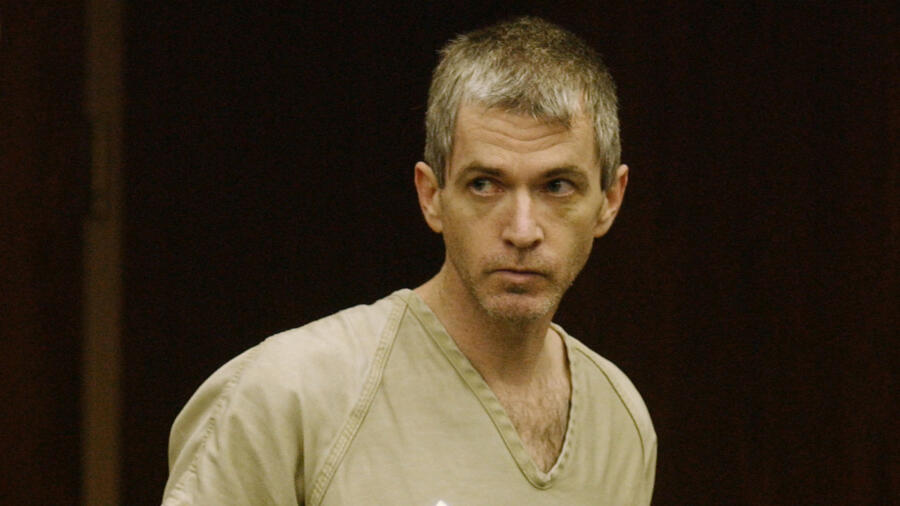In 2005, a colleague of German nurse Niels Högel caught him doing something horrific: injecting a hospital patient not with a life-saving drug, but with one that induced a fatal heart attack. From there, the horrors only escalated. After a decade-long investigation that involved exhuming more than 130 bodies, a German court convicted the 42-year-old caregiver of murdering 85 patients over five years. His motivation? A twisted desire to bring people to the brink of death and then earn praise by “heroically” resuscitating them.
Investigators suspect he may have committed as many as 300 such murders, which could make Högel the most prolific health care serial killer in history. But he’s not alone in taking advantage of his caregiving position to gratify murderous urges.
In 2000, U.K. physician Harold Shipman was convicted of killing 15 patients by injecting lethal amounts of painkiller. (A government report later estimated his victim tally at closer to 250.) And American nurse Charles Cullen, who had a long history of mental instability, confessed to killing at least 40 patients over 16 years—mostly via lethal injections—while working in numerous New Jersey and Pennsylvania hospitals. Officials believe his murder count may also have reached into the hundreds.
Health care killings remain rare—research shows an estimated 35 a year across the U.S.—but exact numbers are hard to pin down since these crimes can be hard to detect in hospitals and nursing homes, where death is an everyday occurrence. Since 1970, there have been over 151 prosecutions of health care providers globally for the serial murder of patients, says Beatrice Yorker, professor emerita of nursing, criminal justice and criminalistics at California State University in Los Angeles and co-author of a 2006 study of medical serial killers.
While the numbers are still small, health care provider serial killings have “consistently trended up” until the 2010s Yorker tells A&E True Crime. (Five prosecutions in the 1970s, 16 in the ’80s, 25 in the ’90s and 60 in the 2000s.) “We believe that increased awareness, safeguards in hospitals and better tracking of medicines have contributed to a decrease—down to 28 prosecutions—in the 2010s,” Yorker says.
Crime of Opportunity
One reason for the uptick is the relative ease with which these killings can be committed.
“In any given profession, there is a small percent of psychopaths,” Yorker explains. “However, if you happen to be a psychopath and you’re a nurse or a doctor, the opportunity is almost too easy… You don’t have to be like Ted Bundy and organize your search of a victim, select instruments for abduction and killing, and be in the right place and be able to carve them up… It’s some pretty heavy lifting to kill people out on the street.”
By comparison, she says, it’s much easier for a nurse to kill a patient they are assigned to care for who’s receiving IV medications. According to her study, the vast majority (86 percent) of serial killings in medical settings globally are committed by nursing staff, not doctors.
Yorker’s study also found that the plurality of these killers used lethal injection as their weapon of choice—in particular, injections of insulin, which at high doses can fatally lower the patient’s blood sugar levels, sending them into hypoglycemic shock. Because a fatal insulin overdose can take hours to days to kill, the administering nurse is often off-shift when the victim flatlines. Lesser-used methods, according to the research, include suffocation, poisoning and equipment tampering.
Different countries operate their hospitals under different regulatory controls, which means that in some nations it’s harder to kill patients by interfering with their intravenous fluids. In America, the FDA introduced mandatory barcode readings in 2004 on all drugs administered to patients at hospitals. That rule—designed as a safeguard against medication errors—also means that lethal doses of insulin and other dangerous drugs are harder to obtain and misuse and can be more easily traced to the perpetrator.
Since so much of health care serial killing boils down to ease of opportunity, American medical personnel intent on foul play have turned to other methods of murder. Since the 2004 FDA ruling, American hospital killings have trended toward the injection of bleach and air.
“What we’re seeing in the United States are more creative methods,” says Yorker. “The serial nurse killers have gone deeper underground. They’re figuring out ways to avoid detection, even in our current system of tracking. For example, injecting air into an IV line does not raise red flags in a medication counting system.”
Playing the Hero
It’s hard to ascribe all health care serial killings to a single motive. Some perpetrators are thrill seekers excited by the transgressive act of killing. Others get a rush from “playing God,” determining who lives and who dies.
Many, like Högel, hope to “play the hero.” After inducing cardiac arrest in his patients, the German nurse would soak up the adulation when he successfully revived them, earning the nickname “Resuscitation Rambo” among his colleagues in the process. Those who died were collateral damage in his quest for affirmation.
Psychologists refer to this behavior—intentionally making a dependent sick in your care, in order to garner sympathy—as Munchausen syndrome by proxy (MSP). Most often, the perpetrator is a parent and the victim, their child.
Munchausen syndrome, where the person simply feigns illness themselves to draw sympathy, is more common. But there’s also overlap between the two, and several murderous nurses have shown both behaviors. Over one four-year span, English nurse Beverley Allitt sought treatment 24 times for her own fake ailments; then, in 1993, she was convicted of killing four child patients.
Other medical serial killers have even more mystifying motives. In Japan, nurse Ayumi Kuboki killed as many as 20 elderly patients in her care by adding disinfectant to their IV bags. She told police she would add the poisoning agent to control the timing of the patients’ death—specifically so they would die while she was off duty, sparing her the uncomfortable task of informing the families.
Many paint themselves as compassionate “angels” helping to end suffering. Cullen, the New Jersey nurse, claimed to have killed patients out of a sense of mercy—a difficult explanation to swallow, given that many of his victims weren’t terminally ill.
“It’s absolutely disingenuous,” Yorker says. “If it was genuine, they would have been talking with the family [about options regarding pain management]. It would be a team meeting with informed consent (like Dr. Jack Kevorkian obtained)… When a nurse says, ‘Oh, I was only trying to help,’ that is a lie; often the murdered patients were not terminally ill. It is part of these killers’ psychopathy.”
A Womanly Type of Murder
Unlike other forms of homicide, serial murder by health care professionals nears gender parity. According to Yorker’s research, in the last five decades 49 percent of health care serial killers were women. In a sense, “male nurses are overrepresented,” Yorker says, because even though they make up over half of nurse serial killers they only make up about 13 percent of the nursing workforce.
By contrast, women only represent an estimated 7 percent of overall serial killers. In the context of serial killing, women are dramatically overrepresented among health care serial killers.
“There are a lot of women doing this… This is a feminine form of violence. As a society, we have laws and we recognize and put people in prison for bludgeoning, shooting, strangling, raping. Those are masculine forms of violence… We as a society are less familiar with feminine forms of violence: poisoning, suffocating, killing with kindness.”
Related Features:
When Healers Become Killers: Why Some Nurses and Other Medical Workers Murder Their Patients
Why Munchausen by Proxy Can Be So Hard to Prove in Court
The Fascination Around Munchausen by Proxy and Crimes that Fake Serious Illness


